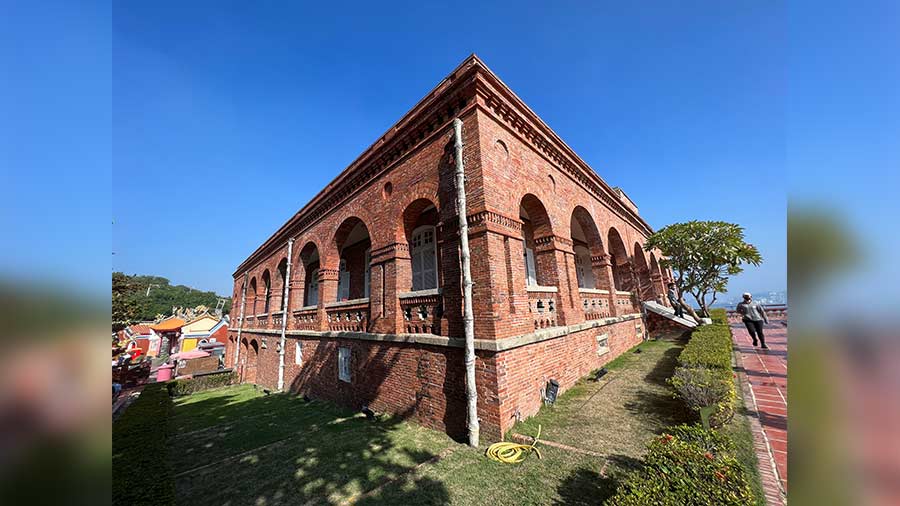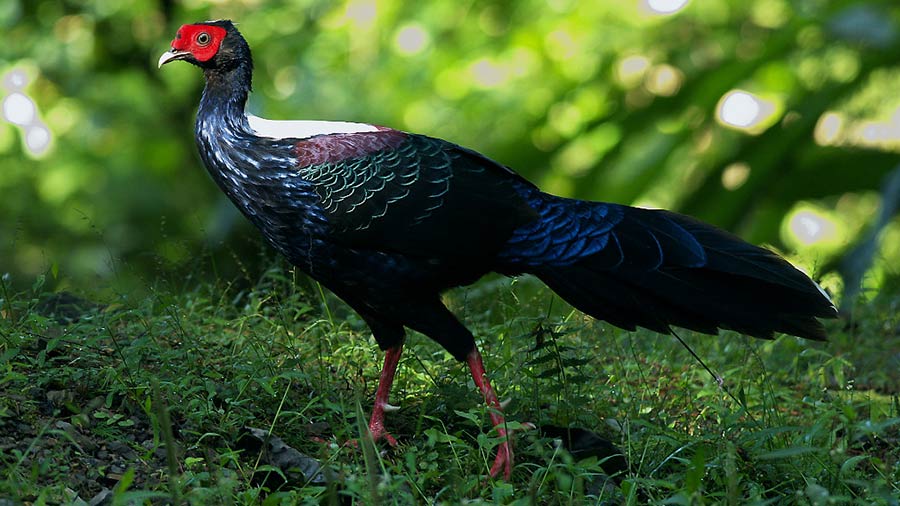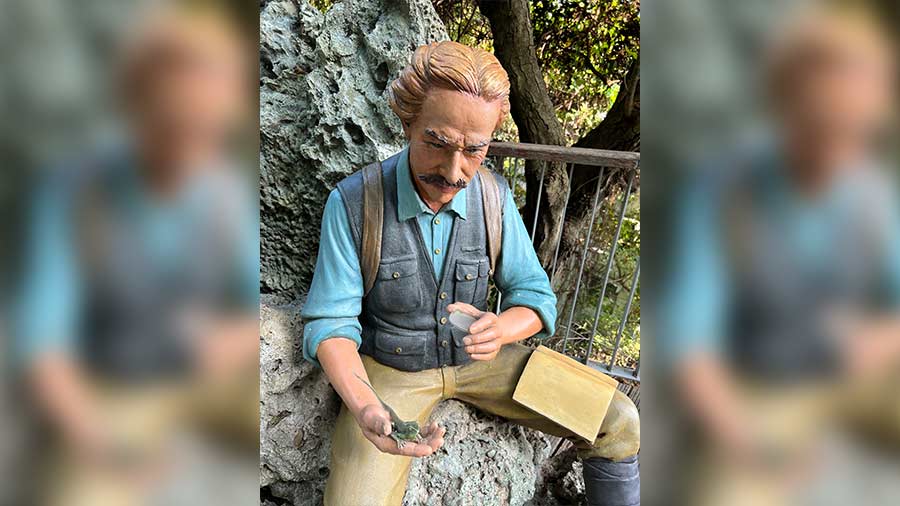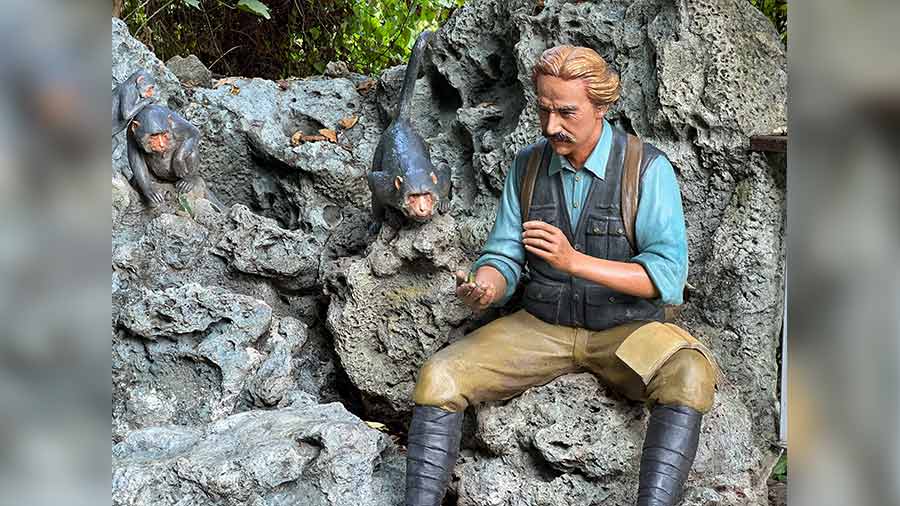Kaohsiung is the largest port city in Taiwan and one of the showpiece sightseeing spots in this burgeoning metropolis south of the island is the old British consulate. The historic consular residence overlooks the busy harbour dotted with bulk carriers, containers, reefer vessels, tugs and cruise ships catering to the global maritime network.
Like most travellers to Kaohsiung — in my case, as an in-residence sojourner — when I decided to visit this tourist attraction with a rich 19th-century legacy, the last thing I expected was to discover links to the capital of my home state, Kolkata. I knew that the English had set foot on Taiwan more than a century ago, but failed to colonise the island, which was then under the control of the Qing dynasty, and wanted to find out more about this long-faded British legacy but could not imagine how close to home it extended.
In a time warp

The emphatic single-storeyed red-brick edifice symbolises one of the earliest Western footprints on Taiwan’s soil Suvam Pal
A short hike up the hill of Shaochuantou near the Kaohsiung wharf took me to the single-storeyed red-brick building that served as the residence of the British consul general for many decades. The refurbished and renovated building stands imposingly alone on the hill, bordered on three sides by an arched veranda that once used to be wooden. The emphatic edifice symbolises one of the earliest Western footprints on Taiwan’s soil.
Inside the baroque-type building, what caught my eye was the sepia-toned photograph of a moustached man. The man, Robert Swinhoe, is omnipresent in that antique abode, be it on the laminated banner on the wall behind the building or the brochure handed over to the visitors at the ticket counter. As the first British vice-consul and consul general in Taiwan, Swinhoe was the first inhabitant of the building that still serves as the vantage point to oversee activities at the Kaohsiung port.
A man of many parts

Robert Swinhoe, the first British vice-consul and consul general in Taiwan Suvam Pal
England-educated Swinhoe made quite a mark as a naturalist/biologist after arriving in Taiwan — a former Dutch East India Company settlement that was then under the Qing rule — as the first European consular representative to the island of Formosa. A fluent Mandarin speaker, he left an indelible mark in Taiwan’s natural history as a pioneering scientist.
Swinhoe, who died in 1877 at a relatively young age of 41, extensively studied the island’s flora and fauna, and documented many birds, butterflies, moths and mammals, apart from playing a pivotal role in the region’s tea trade. Many Taiwanese species were zoologically named after the British official, like Swinhoe’s brown frog, Swinhoe’s japalura and Swinhoe’s pheasant. The troops of Formosan rock macaques or rock monkeys that I spotted on my way down the stone stairways from the consular residence were also first described by Swinhoe. On the trail — again named after Swinhoe — I saw his life-size statue surrounded by the sculpted endemic rock monkeys and animal species christened after him.

Swinhoe’s pheasant Wikiwand
Kaohsiung to Kolkata
Looking at the sculpture of Swinhoe, in a Victorian two-piece morning suit, cast a piercing gaze, I recalled that I had first heard of his surname in connection with two roads in Kolkata. An internet search revealed that the first British envoy to south Taiwan had a strong Kolkata connection. In fact, it was in the Bengal capital that the diplomat-scientist was born.
My subsequent long-distance queries to two of my most resourceful Kolkata contacts, journalist-turned-author-and-entrepreneur Aditi Roy Ghatak and anaesthesiologist Dr Soubhadra Chakraborty shed some more light on Swinhoe’s strong ties with the former British capital of India. Both of them mentioned the possibility of Kolkata’s erstwhile Swinhoe Street (now known as Anil Moitra Road) being named after the pre-Japanese occupation-era Taiwan’s pioneering British Mandarin family.

Kolkata’s erstwhile Swinhoe Street (now Anil Moitra Road) Wikimedia Commons
Dr Chakraborty shared a page from Kolkata’s iconic chronicler P. Thankappan Nair’s magnum opus, A History of Calcutta’s Streets, that reads: “Swinhoe Street had no respectable names to be listed in the directory of 1912.” PTN, as he was popularly known, further stated about the street in Ballygunge’s Mandeville Gardens area: “It was full of gardens and less occupied by native huts. Swinhoe Street was probably named after Robert Swinhoe, a highly respected solicitor of the old Supreme Court of Calcutta who died on February 17, 1845, at the age of 47. His father, Henry Swinhoe, was admitted as an attorney in 1779 and died in 1808 at the age of 56.”
All in a family
Interestingly, according to records documented in Asiatic Journal and Monthly Register for British and Foreign, China, and Australasia, Volume 21, published in December 1836, Robert Swinhoe was an attorney in a perjury case over property between Haro Lal Tagore, an ancestor of Rabindranath Tagore, and Ashutosh Dey in the Supreme Court of Calcutta in 1833. A “verdict of not guilty was recorded” in the case — registered as Hurloll Tagore vs Ashootas Day and also involving Rabindranath’s grandfather Dwarkanath.

Another statue of Swinhoe in Kaohsiung, with an animal species christened after him Suvam Pal
After passing on a family tree of Kolkata’s one and only recorded Swinhoe family to me, Roy Ghatak pointed out that the plenipotentiary in south Taiwan was the grandson of Henry Swinhoe and the son of the former Supreme Court solicitor, Robert Swinhoe, who too was born in Kolkata. Significantly, both the legal luminary father and his naturalist son in Kaohsiung shared the same first name. Robert’s other son, Colonel Charles Swinhoe, the brother of the first European head of mission in Taiwan, served the British Army in Afghanistan and was one of the eight founders of the Bombay Natural History Society.
A couple of kilometres away from the erstwhile Swinhoe Street in Kolkata, there still exists a Swinhoe Lane, about which PTN only wrote: “We have given details of Swinhoe under Anil Moitra Road.” “After checking many old archival records, going through various books on Kolkata, and personally talking to many renowned chroniclers of the city after hearing from you, I couldn’t find the existence of another Swinhoe family here. So quite obviously, the two Kolkata pathways were related to the family of Robert Swinhoe of Taiwan, if not named after his illustrious father,” Dr Chakraborty, a noted trivia junkie and a quizzer, affirmed.
(The writer is an independent journalist, author, documentary filmmaker, and MOE Huayu Chinese Language Enrichment Scholar in Taiwan)
